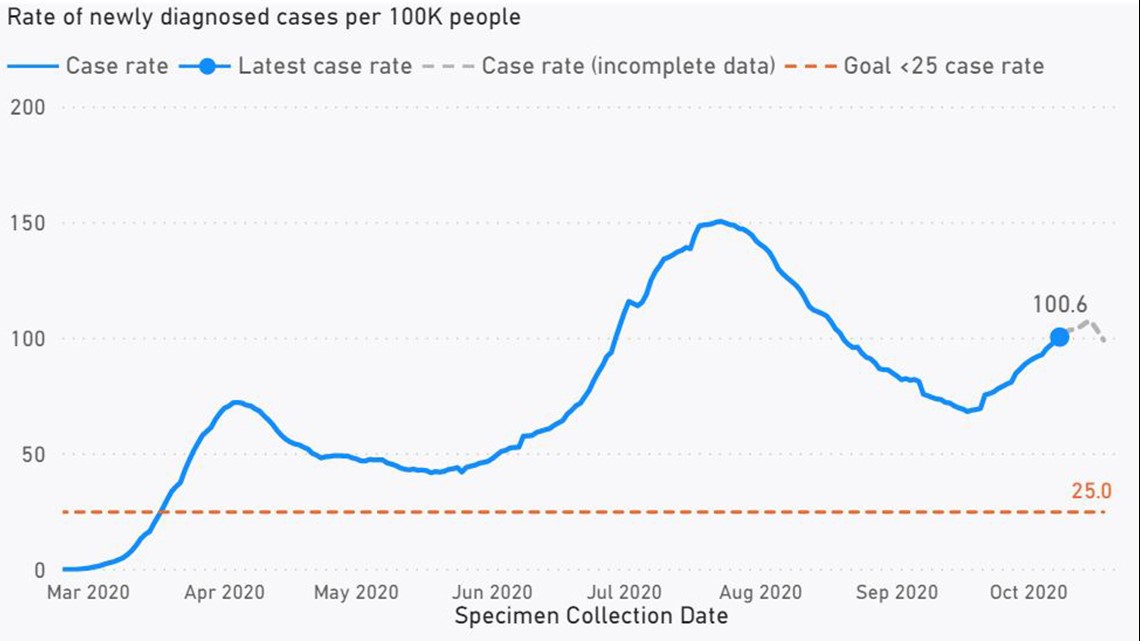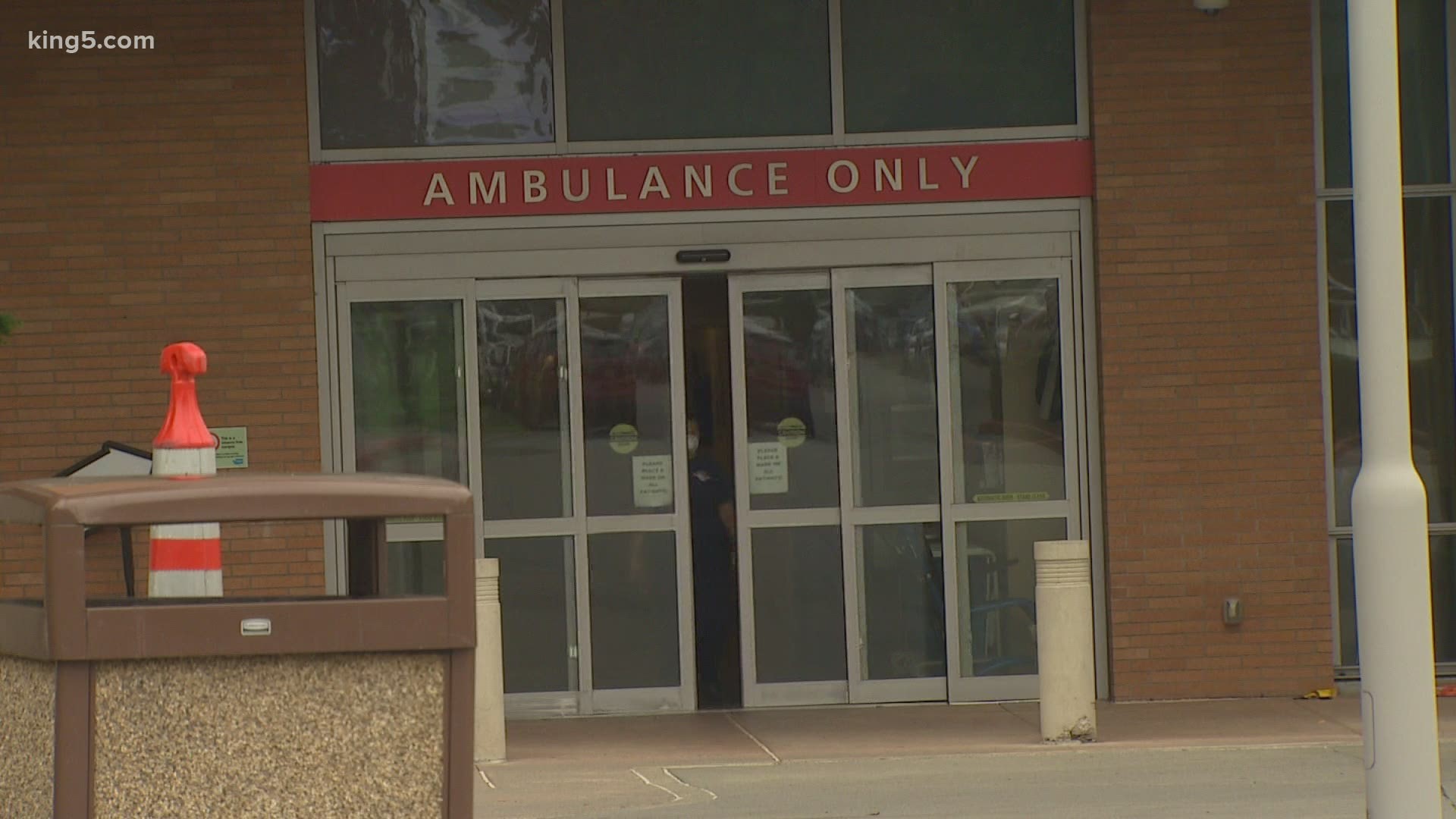SEATTLE — Washington health officials warned Tuesday the state could be entering a fall surge in the coronavirus pandemic as cases increase at “an alarming rate.”
The Washington State Department of Health (DOH) warned climbing cases, if left unchecked, could have “serious consequences” on the health care system, reopening schools and the economy.
“A surge in COVID-19 along with flu season puts us at enormous risk of overwhelming our hospital systems and undoing other important statewide progress toward containment,” Secretary of Health John Wiesman said in a statement. “However, all of us doing our part can turn this trend around.”
Although statewide data points to COVID-19 activity that’s similar to the spring peak, some western Washington counties, including Thurston County, have already surpassed peaks in spring and summer.
From Sept. 25-Oct. 8, there were 100.6 new cases per 100,000 people in Washington, according to the most recent complete DOH data. This is higher than the first peak at the end of March and early April (72.4 new cases) but hasn’t reached the second peak in July (150.6 new cases).


Over the same time period, King County saw 90.5 new cases per 100,000 people, which is still below peaks in spring (104.9 cases) and summer (107.9 cases). Snohomish County most recently saw 73.2 cases over a two-week period, which is nearing the county’s summer peak (90.4 cases). Pierce County registered a case rate of 94.1, which surpasses the spring peak (64.4 cases) but not what the county faced in July (156.5 cases).
DOH says this trend in increasing cases is likely connected to widespread disease transmission, not localized outbreaks.
To slow the spread of transmission, DOH recommends people wear masks when around others, keep social gatherings small and outside, wash and sanitize their hands often and stay home when they’re sick. People should avoid social gatherings indoors, but if they must participate, officials urge the public to wear a mask and keep windows and doors open.

